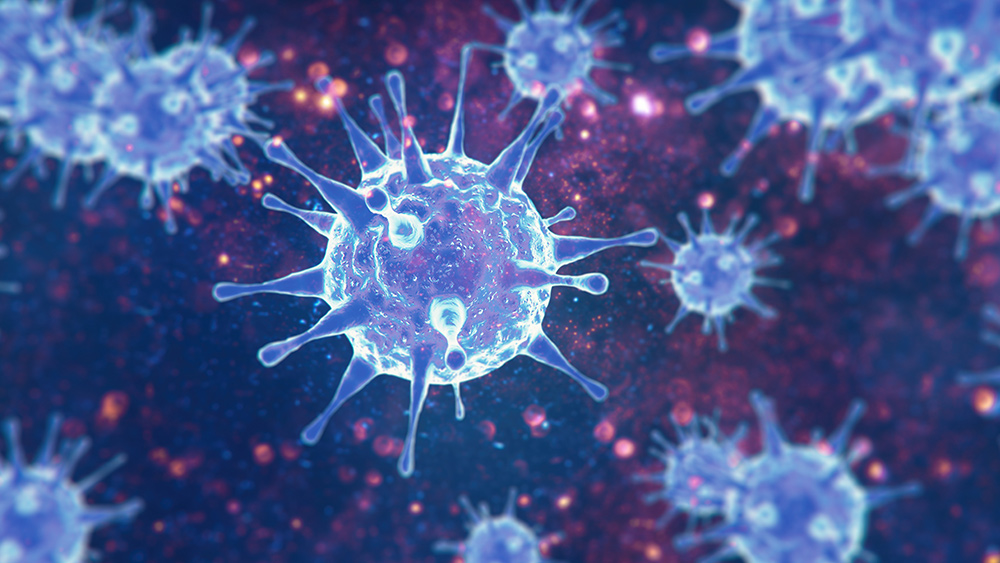
Advertisement
To prevent the arrival of the coronavirus into Hong Kong, the Hong Kong International Airport (HKIA) has begun trialing several new innovative technologies. Airport authorities have enlisted the help of autonomous cleaning robots, a full-body disinfection facility and an antimicrobial coating to help them keep Hong Kong safe from the coronavirus being brought in by overseas passengers.
“The safety and well-being of airport staff and passengers are always our first priority. Although air traffic has been impacted by the pandemic, the Airport Authority spares no effort in ensuring that the airport is a safe environment for all users,” said Steven Yiu, deputy director for service delivery at Hong Kong Airport Authority (HKAA). (Related: Could coronavirus infect 80 percent of humanity? Hong Kong scientist says yes.)
Using technology to fight COVID-19
The CLeanTech channel is an enclosed, full-body disinfection facility. It can sanitize people inside the facility, reportedly killing 99.9 percent of germs on their bodies in just 40 seconds.
People who use the CLeanTech channel will have their temperature checked before they enter the disinfection facility. Inside, its surfaces are equipped with an antimicrobial coating that kills viruses on skin and clothing. At the same time, it also sprays people with a sanitizer, disinfecting them.
To avoid cross-contamination, the CLeanTech channel is kept under negative pressure — when the doors are opened, the air will rush into the compartment, preventing pathogens from escaping.
VIDEO: Hong Kong International Airport is applying new disinfection technologies, including autonomous cleaning robots, to protect passengers and staff from coronavirus infection pic.twitter.com/2Og8fLBJs3
— AFP news agency (@AFP) May 5, 2020
The CLeanTech channel isn’t the only piece of innovative technology that HKIA is using to keep the airport coronavirus free. The airport also deployed a small fleet of autonomous cleaning robots, known as Intelligent Sterilization Robots (ISR). These use two sterilizers to disinfect surfaces: an air sterilizer and an ultraviolet light sterilizer.
The ISRs are tasked with disinfecting key operating areas in the airport’s terminal building, such as public bathrooms. These robots are claimed to be able to kill up to 99.99 percent of bacteria within their vicinity in just 10 minutes.
HKIA is also trialing the application of an antimicrobial coating, similar to the one used in the interior of the CLeanTech channel. This coating, will be applied on many high-touch surfaces in HKIA terminals. Some of these high-touch surfaces include, but are not limited to:
- Elevator buttons
- Baggage trolleys
- Seating areas in the terminal
- Check-in counters and smart check-in kiosks
- Handles and seats on people movers and airline passenger buses
- Toilets and other surfaces on public bathrooms
The HKIA will try out the CLeanTech channel, the ISRs and the antimicrobial coating for a month. After this period, airport authorities will evaluate the results and consider whether they’ll continue their use.
In addition to these new technologies, a small army of workers has also been tasked with meticulously disinfecting every single surface at the airport. These new technologies are meant to aid and supplement their efforts.
HKIA and airports around the world will need to adjust to the new normal
Hong Kong International Airport is one of the busiest airports in the world in terms of passenger traffic. Even with lockdowns and quarantines all over the world affecting passenger numbers, the airport is still seeing over half a million people pass through it each month.
Keeping the airport clean and making sure no new outbreaks occur in the country is no easy task. Before the global coronavirus pandemic, airports around the world only cleaned their facilities using regular industrial cleaning products.
Hopefully, with the help of these new technologies, Hong Kong will be safer from any new outbreaks from the many planes that arrive at the airport.
Sources include:
Advertisement
Advertisements
















